I didn't know what stack exchange site to put this on, so I put it here. I am trying to determine if there is a correlation between the size of a school and the major that the school specializes in.
In order to do this, I programatically collected and analyzed data. In order to make my report, I need to make a few graphs in excel, but I have no clue how to do this.
What I'm looking for is a scatter plot, with quantitative values on the Y-Axis (the school size) and qualitative values on the X-Axis, I would like there to be every major listed out (kinda like a bar graph). From there, I want to plot a point above the major that a school specializes in; and have that point be as high as its student size.
Any help?
Edit:
Here is my sample data set. I want it to have categories that are to the right of the data, and points on the graph that correspond. 